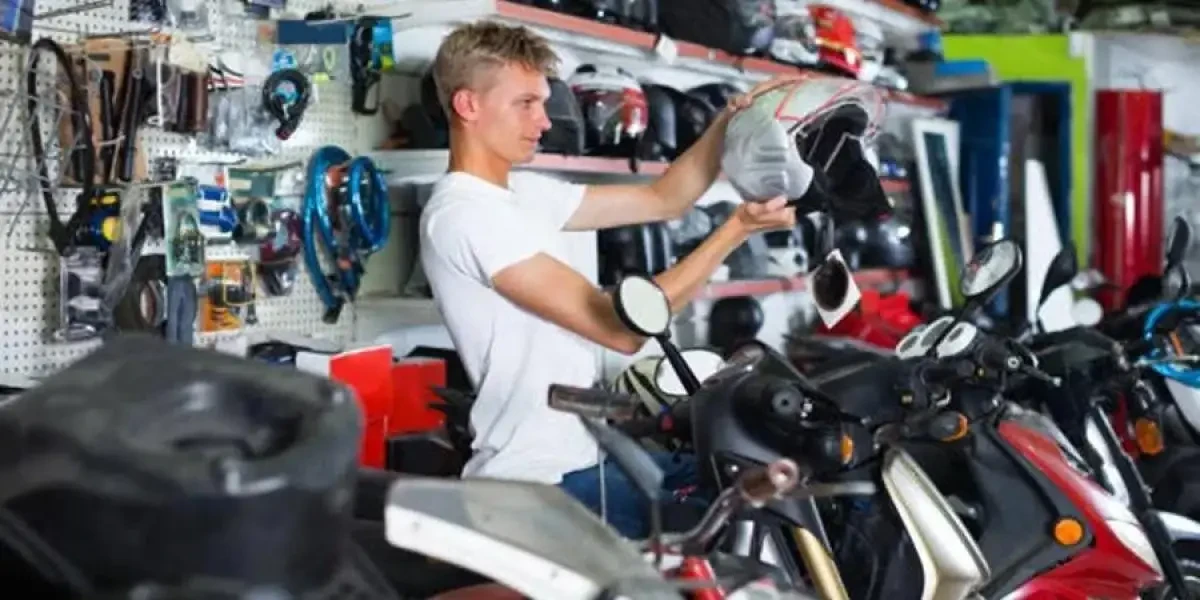Shop the Best MX Parts NZ for Your High-Performance Bike
Shop the Best MX Parts NZ for Your High-Performance Bike
Blog Article
Comprehending the Vital Parts of a Bike: A Comprehensive Guide for Enthusiasts
For bike enthusiasts looking to elevate their riding experience and guarantee their bikes run smoothly, comprehending the crucial elements of a motorcycle is vital. Each aspect, from the engine's complex workings to the crucial duty of the braking mechanisms, not only influences performance however additionally security and convenience. This guide will stroll through the basic components that every rider ought to know with, making it possible for educated options in both upkeep and prospective upgrades. As we start this expedition, one must ask: just how does each element engage to create the seamless adventure every enthusiast looks for?
Engine Elements

The camshaft plays an essential duty in managing the timing of the engine's shutoffs, making sure the precise opening and closing needed for efficient gas and air consumption, in addition to exhaust expulsion. This timing is vital to maintaining optimum engine performance and performance. Additionally, the carburetor or gas injection system, relying on the motorbike version, is accountable for blending air with gas in the appropriate proportion for combustion.
The air conditioning system, either air or liquid-based, functions to preserve the engine's temperature level within operational limits, protecting against overheating and making sure longevity - mx gear nz. Each component, thoroughly developed and incorporated, adds to the smooth operation of the engine, defining the motorbike's power result and total performance
Transmission System
Essential to the bike's capability, the transmission system guarantees effective power transfer from the engine to the wheels. This system consists of numerous essential parts, consisting of the clutch, transmission, and last drive, each playing a vital role in translating the engine's power into movement. The clutch, usually operated by a hand bar, offers to engage and disengage the engine from the transmission, enabling smooth equipment adjustments and controlled acceleration.
The gearbox, usually described as the transmission correct, has a collection of equipments that motorcyclists can manually shift through to adjust the bike's rate and torque result. These equipments are set up in a series that makes it possible for the bike to increase efficiently and preserve optimal engine performance throughout different speeds. Many motorcycles make use of a consecutive transmission, needing the biker to move gears in a predetermined order.
Braking Devices
While recognizing the transmission system is crucial to using a bike's power, similarly important is the ability to regulate and quit that power successfully, which is where braking mechanisms enter play. Brakes are crucial for safety and security and efficiency, offering the cyclist with the needed control to navigate numerous terrains and problems. Usually, motorcycles include two sorts of braking systems: disc brakes and drum brakes.
Disc brakes are much more prevalent in modern-day bikes due to their exceptional efficiency. This system supplies far better heat dissipation, regular efficiency, and boosted stopping power, particularly in damp conditions.
On the other hand, drum brakes, though less typical, are still found in some motorcycles. They work by pushing brake shoes versus the inner surface of a drum affixed to the wheel. While usually less efficient in warm dissipation and quiting power, drum brakes are easier and a lot more economical.
Comprehending these stopping systems' subtleties enables cyclists to keep their motorcycles appropriately click this link and value the engineering that makes certain effective and secure quiting.
Suspension and Steering
Suspension and steering systems are vital parts that substantially affect a motorcycle's handling and experience convenience. The shock absorber, consisting of forks at the front and shock absorbers at the rear, soaks up roadway abnormalities, improving security and control. Front forks, typically telescopic or upside down, compress and rebound to reduce effects, while rear shock absorbers preserve tire call with the roadway, important for traction and security.
Guiding, centered around the handlebars, links the cyclist to the bike's directional control. The guiding head bearings make sure smooth procedure, permitting precise maneuverability. Correct placement and upkeep of these bearings are important for predictable steering feedback and decreasing rider exhaustion.
The suspension's adjustability is one more vital facet; preload, damping, and rebound setups enable customization to match various riding styles and problems. This flexibility is necessary for enhancing performance, whether navigating metropolitan roads or tackling rugged routes. Developments like digital suspension systems offer real-time modifications, boosting adventure high quality throughout diverse surfaces.

Electric Solutions
After making certain a smooth and regulated ride with effective suspension and steering systems, focus transforms to the electric systems, a crucial aspect of modern motorcycles. These systems play an essential function not just in starting the engine but also in powering different parts that enhance the functionality and security of the bike.
At the heart of a motorcycle's electrical system is the battery, which stores electrical energy essential for beginning the engine and powering supporting systems - motocross parts nz. The generator or generator, coupled with the rectifier-regulator, ensures the battery continues to be billed while the bike is Clicking Here in procedure, transforming mechanical energy right into electric power and maintaining voltage levels
The ignition system, one more important element, is accountable for igniting the air-fuel mix in the engine's cylinders. Modern motorbikes often utilize an electronic ignition system, using greater performance and integrity contrasted to traditional systems.
Lighting systems, consisting of headlights, tail lights, and indicators, are also important, ensuring exposure and security for the motorcyclist. Added digital parts such as sensors, control units, and presents contribute to innovative attributes like fuel injection monitoring, anti-lock stopping systems (ABS), and digital control panels, even more enhancing the riding experience.
Conclusion
An extensive understanding of a bike's crucial elements, including the engine, transmission system, stopping systems, suspension, guiding, and electrical systems, is indispensable for fanatics intending to optimize convenience, performance, and security. Mastery of these elements enables informed choices concerning upkeep and upgrades, ultimately enhancing the riding experience. By integrating this understanding, riders can guarantee their motorcycles run at peak efficiency and integrity, thereby making the most of both satisfaction and durability of their vehicles.
For bike enthusiasts looking to raise their riding experience and guarantee their bikes run smoothly, comprehending the essential components of a motorbike is vital.Integral to the motorcycle's performance, the transmission system makes certain see here now effective power transfer from the engine to the wheels.While recognizing the transmission system is essential to utilizing a bike's power, equally essential is the capability to regulate and quit that power properly, which is where braking devices come right into play. Commonly, motorcycles feature two kinds of braking systems: disc brakes and drum brakes.
A complete comprehension of a bike's crucial elements, consisting of the engine, transmission system, stopping devices, suspension, guiding, and electrical systems, is crucial for lovers intending to enhance comfort, efficiency, and safety and security.
Report this page